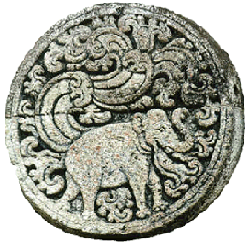|
||||||
|
HISTORY
Bali is a living museum of the old Indo-Javanese civilization that flourished on East Java over 400 years ago. Prior to 1815 Bali had a greater population density than Java, suggesting its Bali-Hindu civilization was even more successful than Java's. Majapahit refugees were not the first to bring Hinduism to Bali; Indian culture was present in parts of the island as early as the 9th century, and Balinese writing is derived from the Palava script of southern India. Bali today provides scholars with clues about India's past religious history in old sacred texts that have vanished in India itself.
When Gajah Mada of Java's Majapahit Empire conquered Bali in the mid-14th century, East Javanese influences spread from the purely religious and cultural spheres into fine art, dancing, sculpture, and architecture. When that empire fell in the 16th |
|
|
century under pressure from Islamic military and economic invasion, there was a mass migration of Java's Majapahit scholars, dancers, and rulers to Bali. Priests took their sacred books and mythical records, and on Bali they developed unique Bali-Hindu customs and institutions. But Hinduism is only the veneer; the Hindu practices of the new masters were merely superimposed on the deeply rooted aboriginal animism of the Balinese natives, who cling to beliefs dating back to the Bronze Age.
In the early 19th century, Bali's sole export was its highly prized slaves; its imports were gold, rubies, and opium. The island remained obscure for so long because of its lack of spices, precious metals, or aromatic woods, and because of its steep cliffs rising from the sea, deep straits with treacherous tidal currents, and encircling reefs. Surprisingly, the fertile, lava-rich lowlands of Bali were among the last areas occupied by the Dutch and only came under their colonial rule following prolonged resistance. When a wrecked cargo ship off the south coast was looted by the Balinese at the turn of this century (a traditional practice of island peoples), the Dutch used the incident as a pretext to control the island. One sunny morning in 1906 in Puputan Square, Denpasar, Hindu princes and their families, wearing splendid ceremonial costumes and waving priceless kris, charged deliberately into Dutch rifles. This mass suicide (puputan), and another two years later in Klungkung, resulted in the annihilation of Bali's most powerful and highest ranking royal families |
|

